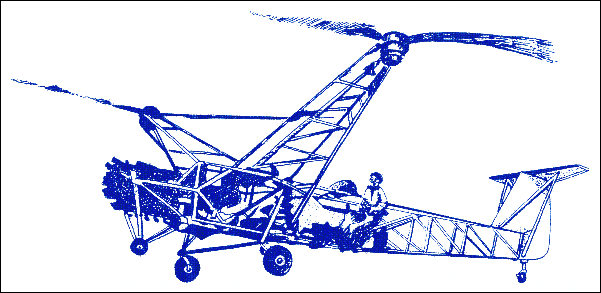|
|
Much larger than its predecessors, this two-seater helicopter was powered by a more powerful fan-cooled engine located in the nose. Each of the two rotors had three blades made of compressed wood with leading edges in metal. They rotated at 275 r.p.m. and had both cyclic and collective control all enclosed within the hub. A ratchet-type freewheeling device was used for flying in auto-rotation.
The maiden flight took place in Scotland in October 1939, but World War II, then in its early stages, caused all work to be stopped on the W.6 in the middle of 1940. P.Lambermont "Helicopters and Autogyros of the World", 1958
* * *
| Technical data for Weir W.6
Number of seats: 2,
engine: 1 x Gipsy rated 205hp,
rotor diameter: 7.62m,
length: 8.53m,
height: 3.2m,
gross weight: 1070kg,
cruising speed: 128km/h,
rate o climb: 198m/min,
absolute ceiling: 3810m
|
Warning: mysqli_connect(): php_network_getaddresses: getaddrinfo for mysql5.zone.ee failed: Name or service not known in /data03/virt15346/domeenid/www.aviastar.org/htdocs/helicopters_eng/weir_w6.php on line 72
Fatal error: Uncaught mysqli_sql_exception: php_network_getaddresses: getaddrinfo for mysql5.zone.ee failed: Name or service not known in /data03/virt15346/domeenid/www.aviastar.org/htdocs/helicopters_eng/weir_w6.php:72
Stack trace:
#0 /data03/virt15346/domeenid/www.aviastar.org/htdocs/helicopters_eng/weir_w6.php(72): mysqli_connect('mysql5.zone.ee', 'd14657sa18989', Object(SensitiveParameterValue))
#1 {main}
thrown in /data03/virt15346/domeenid/www.aviastar.org/htdocs/helicopters_eng/weir_w6.php on line 72
|





